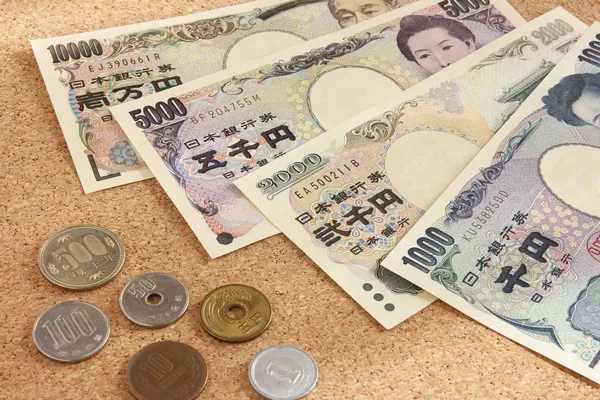The Japanese Yen (JPY) has long been a significant player in the global currency market, reflecting Japan’s economic prowess and financial stability. Over the years, the yen has witnessed fluctuations in its exchange rate, responding to various economic, political, and global factors. In this article, we delve into the archives to explore the highest yen rate in history, shedding light on the circumstances that led to this peak.
The Historical Context:
Understanding the highest yen rate in history requires a journey back in time to consider the economic landscape and global events that shaped currency markets. The post-war era saw Japan emerging as an economic powerhouse, marked by rapid industrialization and export-led growth. The yen, as the official currency of Japan, became a barometer of the nation’s economic health.
The Plaza Accord:
One of the pivotal moments in the yen’s history was the Plaza Accord of 1985. This multinational agreement involved major economies, including the United States, Japan, West Germany, France, and the United Kingdom. The primary objective was to address the issue of a depreciating U.S. dollar. Consequently, the yen appreciated significantly against the dollar, reaching historical highs.
The Impact of the Plaza Accord on the Yen:
The Plaza Accord, signed on September 22, 1985, set the stage for a substantial revaluation of the Japanese yen. The accord called for coordinated interventions in the foreign exchange markets to bring down the value of the U.S. dollar. This move aimed to reduce the U.S. trade deficit by making American exports more competitive.
The intervention had a profound impact on the yen’s exchange rate. By the end of 1985, the yen had appreciated by around 50% against the U.S. dollar. The highest yen rate in history was recorded during this period, and it marked a significant shift in the global economic order.
The Peak Exchange Rate:
The highest yen rate occurred in the aftermath of the Plaza Accord, with the yen reaching an unprecedented level against the U.S. dollar. In the latter half of 1985 and the early months of 1986, the exchange rate surpassed historical records, creating both challenges and opportunities for Japan’s economy.
The yen’s peak rate during this period was approximately 80 yen to the U.S. dollar. This represented a stark contrast to the pre-Plaza Accord levels, where the exchange rate was hovering around 240 yen to the dollar.
Economic Ramifications:
While the appreciation of the yen had positive implications for Japanese consumers purchasing foreign goods, it posed challenges for the country’s export-oriented industries. Japanese exporters faced increased competition as their products became more expensive in international markets. This shift had a noticeable impact on Japan’s trade balance and economic growth.
The Long-Term Effects:
The repercussions of the Plaza Accord were felt for years, with Japan navigating the complexities of a stronger yen. The country underwent structural adjustments in its economy, moving away from export-led growth and diversifying into high-tech industries and services.
Subsequent yen interventions by the Bank of Japan aimed to manage the currency’s volatility, but the legacy of the Plaza Accord endured. The events of the mid-1980s left an indelible mark on the yen’s position in the global currency hierarchy.
Post-Plaza Accord Dynamics:
In the decades following the Plaza Accord, the yen experienced periods of appreciation and depreciation, influenced by factors such as monetary policy decisions, economic indicators, and geopolitical events. Japan’s persistent trade surpluses and its status as a major creditor nation contributed to the yen’s reputation as a safe-haven currency.
The Global Financial Crisis:
The yen’s role as a safe-haven currency was underscored during the global financial crisis of 2008. Investors sought refuge in the yen, driving up its value against other currencies. During this period, the yen reached levels not seen since the aftermath of the Plaza Accord.
The Impact of Abenomics:
In the early 2010s, Japan faced deflationary pressures and economic stagnation. The government, under Prime Minister Shinzo Abe, implemented a set of economic policies known as “Abenomics” to revitalize the economy. These policies, including aggressive monetary easing, had a depreciating effect on the yen, providing a counterpoint to its historical peaks.
Contemporary Yen Exchange Rates:
As of my last knowledge update in January 2022, the yen’s exchange rate continued to reflect the dynamic interplay of economic forces. Ongoing factors such as the COVID-19 pandemic, monetary policy decisions, and global trade dynamics influenced the yen’s valuation.
Conclusion:
The highest yen rate in history, spurred by the Plaza Accord of 1985, marked a transformative period for Japan’s currency and its economic landscape. The repercussions of this event reverberated through subsequent decades, shaping Japan’s approach to economic policies and global trade relations. While the yen’s exchange rate has experienced fluctuations over time, its significance in the international financial system endures, making it a currency worth monitoring for investors, policymakers, and enthusiasts alike.


